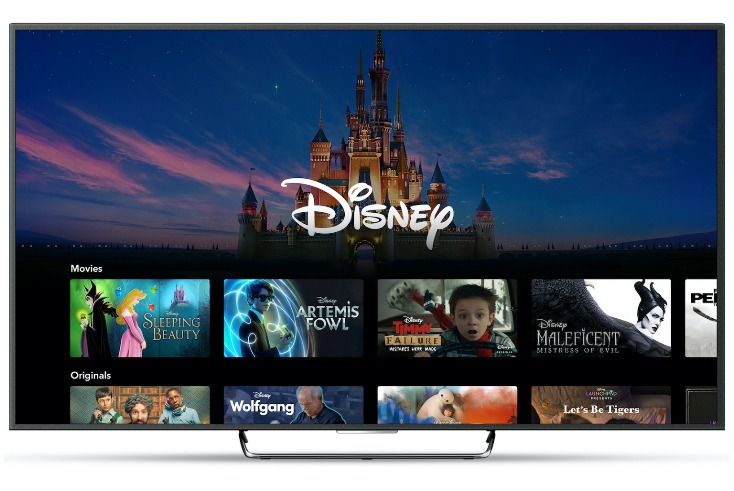‘Unprecedented’ inflation as TV ad prices overtake pre-pandemic levels

TV ad pricing in January 2022 “bucked” historical trends to surge past levels not seen since before the Covid-19 pandemic, while the outlook for 2022 remains unpredictable due to the World Cup being televised in the run-up to Christmas.
Figures from BARB, produced by Mediatel Connected, and agency estimates shared with The Media Leader show costs per thousand (CPTs) rose above pre-pandemic levels in January, a month that is usually more “predictable” and affordable for advertisers.
Factors such as higher demand, less supply, the proliferation of broadcast video on demand (BVOD) and subscriber video on demand (SVOD) platforms are among the reasons for this degree of inflation in the TV ad market.
There also appears to be a continued increase in demand from online business that are buying TV advertising for the first time, according to media agency buyers and analysts.
Peter King, head of TV research at Omnicom media agency OMD, said: “January is high as we are expecting a 15.5% increase in expenditure whilst viewing (impacts) are down by some 19.1% for ABC1 adults.
“A rough rule of thumb sees both numbers added together to give an inflationary CPT increase of about 35%. In reality it’s worse at +43%.”
(CPTs, above, are calculated on Mediatel Connected using the formula Revenue + 17.65% agency commission divided by Impacts).
‘Revenue increased much more than the market predicted’
There were predictions at the end of last year for “an exceptionally inflated winter”. This appears to have come true, with a decline in TV audiences (a lack of advertising supply) being met by an increase in demand.
Nicola Teague, head of AV planning at independent agency the7stars, has estimated that total impacts (TV audiences) were down 20% year on year in January, coupled with a 15% increase in revenue.
“Even ABC1ads [are] up 40% year on year on ITV,” Teague explained.
“In 2021, the broadcasters celebrated record numbers in ad revenue, with ITV set to announce a whopping 24% increase year on year,” she said. “In truth, revenue increased much more than the market predicted, which when coupled with large declines in linear impacts, led to unprecedented levels of inflation in the TV market (particularly from September onwards).”
“January is typically a predictable month when it comes to TV pricing. Impacts are usually strong due to factors such as the weather, post-Christmas frugality, and good programming slates from the broadcasters. Revenue is also fairly stable, fluctuating by a maximum of 5% YoY over the last 5 years. However, January 2022 bucked the trend,” she added.
Bryony Lawler, head of AV at Publicis Groupe agency Starcom, added: “January pricing is characterised primarily by a ‘right-sizing’ versus January 2021. Buoyed by Lockdown 3, TV viewing in January 2021 was the highest it has been since 2018, therefore naturally, impacts have dropped off significantly this year.”
‘Pandemic bounce back’
Kate Scott-Dawkins, global director, business intelligence at GroupM, said its investment teams in the UK have seen higher TV demand in the last year and the channel has rebounded to 2019 levels more quickly than other traditional channels like radio or outdoor.
Teague, meanwhile, said that even even established ‘appointment to view’ shows underperformed, such as The Masked Singer (pictured, above), which suffered a 30% decline year on year.
“Even ITV’s new drama Anne struggled to deliver (averaging less than 2.7m impacts, compared to The Pembrokeshire Murders in January 2021 which averaged 9.3m),” she added
Richard Oliver, managing director of IPG Mediabrands’ Magna, agreed that TV prices are normally results of simple supply and demand but stressed: “On the demand side, there’s definitely been a sort of post pandemic bounce back, as you would expect so I think that the market is strong and demand is strong.
“But when you’re looking at inflation, how much is the price compared to the same time last year, then you do have some of those sort of anomalies in the baseline from last year.”
The “suppressed base” from last year, linked to lockdowns, is helping drive inflation, he said.
Oliver also said that this higher demand and lower baseline comparison coupled with a declining supply of eyeballs on TV screens is a global long-term trend that “is not going to get better any time soon”.
New digital entrants into the market
James Wilby, head of AV trading, Dentsu agency Amplifi UK told The Media Leader: “A 15% revenue increase was partly the result of higher demand amongst advertisers who had slowed or cut their spend last year – most notably the travel sector returned with increased investment in Jan.”
“This was bolstered by new spenders who took advantage of cheaper prices during the pandemic continuing to invest heavily after experiencing the positive results TV delivers in generating business growth,” he added.
Martin Broad, executive director and head of AV at MG OMD, commented that significant revenue growth had been driven by new and emerging sectors from ecommerce and online categories.
Oliver highlighted the whole online sector had been “a very active category on TV for the last 18 months or so” and gave example like online grocery delivery companies and car resale platforms entering the offline TV market.
“I think in the long-term, they will be supporting a healthy TV market but they’re not driving the significant inflation,” he added. “There was an element of that in January and Q1 generally, but also in Q1 last year, revenues declined because there was less activity in the market because we had lockdown so there is that baseline effect that we need to take into account.”
Lawler also mentioned additional booking flexibility contributing to this year’s January pricing.
She said: “Coupled with continued heavy investment in TV from new digital entrants to the market, and advertisers who are making the most of the additional booking flexibility now enjoyed on TV, the result is record-breaking pricing.
“The fact that advertisers continue to spend more than ever in TV, despite these price increases, is a testament to the enduring power of TV advertising.”
The impact of BVOD and SVOD
Many agency sources highlighted the surging popularity of BVOD and SVOD platforms as contributing to TV pricing inflation.
Scott-Dawkins noted advertising inventory was being constrained due to media giants like Disney shifting resources into its Disney+ streaming platform.
She explained: “Networks like Disney and Sky/NBC Universal, under pressure from streaming players like Netflix and Amazon Prime, continue to shift resources from traditional networks to streaming services.
“Because the dominant players in streaming are ad-free, any newer services may choose to offer “ad-lite” experiences. This constrains the available inventory in the market and contributes to higher levels of inflation than we may have seen otherwise.”
 Disney+: rise of SVOD platforms is constraining TV ad inventory
Disney+: rise of SVOD platforms is constraining TV ad inventory
Teague, meanwhile, noted that overall BVOD views were more reflective of traditional viewing trends for January, appearing to drop only 4% YoY.
“[This] is strong, considering in January 2021 we were in full lockdown”, she noted. “According to Dovetail data via Techedge, BVOD views in January 2022 were over three times higher than in 2020, a clear indication that the changes in viewing habits during lockdown are here to stay.”
“Continuing SVOD proliferation is also a growing factor with latest subscription figures from the Barb Establishment survey showing that homes with at least one SVOD subscription has reached 19m homes for the very first time,” Broad added.
‘Real unknown’ whether inflation will continue into Christmas
Looking ahead, Oliver expected inflation to continue into February and March, with April also being “quite inflationary” for the TV market, but that this “will then start to slow as we get through to Q2 and Q3”.
He said that comparing to that period to the same time last year with spend building in preparing for the European Championships was a “more normal baseline”.
However, the World Cup falling in Q4 this year raises many questions around TV pricing and planning.
“Q4 is a real unknown, because you’ve got the first ever World Cup in December,” Oliver said.
He added: “December’s a bit of contradiction in demand spend. We always think it’s a really, really busy month, but actually, there’s a lot of the traditional or long-term TV advertisers who tend to spend less in December so you have a lot more spent on fewer brands.”
However, this year with the World Cup in Qatar showing at “friendly times” for us “slap in the middle of British viewing times”, combined with typical gifting and supermarket activity, means brands like motor and finance brands could see November and December as “a great time to advertise”.
At the same time, some brands may decide “it’s too busy for me” and find somewhere else to advertise, he noted.
Teague predicted: “While it is predicted that linear pricing will stabilise from Q2 2022, it’s becoming increasing clear that advertisers and agencies need to be planning across multiple AV touchpoints going forwards in order to drive the most cost-effective reach.”
“AV trading should also allow agencies the flex to dial up or dial down areas of the AV plan in order to react to inflation in the linear market,” she added.
Please note, the figures in this graph for December 2021 and January 2022 have been revised since publication.



